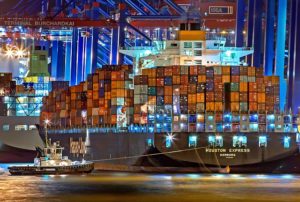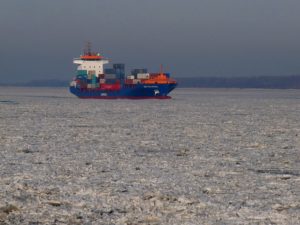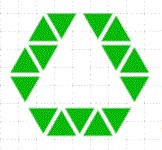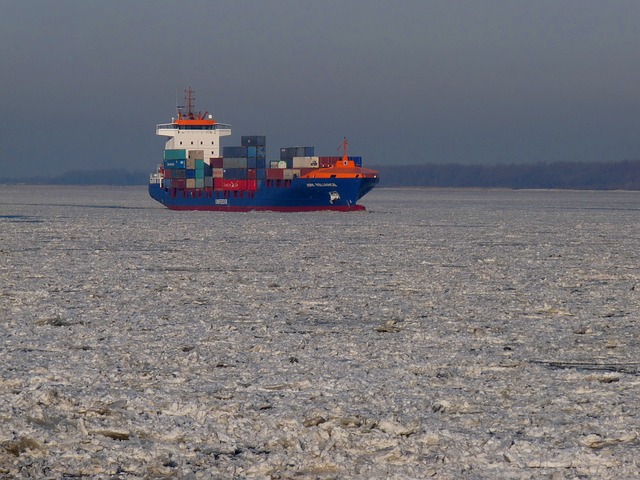Have you ever heard of commodity codes?
What are they and who would use them…?
Okay, what are Commodity Codes, they are an internationally standardized system of letters and numbers to classify traded products, mostly used when shipping goods from one country to another, or around the world.
Shipping containers are large steel boxes that were originally designed to reduce the time a ship spends in port. Money was saved in port charges, as well as enabling a ship to make more round trips each year.
(Here is my disclaimer, I am not a shipping agent, and I am not giving advice, it’s general information from my experience.)
These larger containers are 40 ft long & the smaller ones are 20ft long and have a multitude of uses. We see them stacked up in freight yards and on ships. Some are seen on trains and trucks, outside factories being loaded or just used as temporary storage!
Shipping Containers where Commodity Codes are Used
Containers were invented in 1956 and changed what dockyards used to look like, from labour-intensive to capital-intensive industries virtually overnight. This is where your commodity codes really come into play and shows how fast things can be processed on the dockside for all concerned.
Now let’s look at one of the most modern ships used for carrying containers across the oceans, the Thalassa Elpida, an overall length of 368 metres by 51 metres wide, built-in 2014. Her gross tonnage at 148,667 and a deadweight of 152,344 tones.
Right, she is a big ship by any standard…!
Built by Hyundai Heavy Industries, at Ulsan, South Korea, her container capacity is 13,800.
Her engine type is MAN-B&W and generates 53,250 KW.
This ship calls at many of the largest ports between China and Europe.
This takes about 5 weeks to complete, including loading and unloading at each port on her way.
Now if you are lucky to have goods on board, all will go like clockwork most of the time. Occasionally you may get the odd delay, the worst that I have come across after all your arrangements have been made and confirmed.
Is to receive a last-minute notification that your containers!
Have been delayed…!
What can it be now…?
You guessed it, Port Congestion…

Pixabay License Free for commercial use, no attribution required.
Now we get to what these commodity codes are used for, by customs to value your goods for import tax and duty. Easy when you get your code, as they can apply the correct tariff on your goods, and once you have paid up, your containers can be delivered to their destination.
Otherwise, you would have to wait to have the correct code applied to your cargo…?
That means that your container is not going anywhere. As your container is held on the port side you will be charged for this inconvenience!
Surprised, well don’t be…?
If you do not have your paperwork in order before shipping you could be in for an expensive wait, to sort out the correct code to apply to your cargo of goods.
The charge, by the way, is called demurrage, now if you are not involved in shipping that will be an unfamiliar word for you…!
The charge is worked out by the day, the container size, and the port they are held up at. Now that is not all the charges you may face; you will have to pay for container storage and rental charges also.
Container Demurrage
Because the supply of a shipping container to a merchant has a similar nature to the contract of a supply of a vessel to a voyage charter, the industry refers to this container usage beyond the time allowed as Container Demurrage. This extra usage usually entitles the container supplier (usually the shipping carrier) to require a payment from the merchant.
In principle, it can be considered that the similarity between vessel demurrage and container demurrage is correct since both refer to the same concept, which is the late return of equipment supplied by one party to another for the purpose of carrying a cargo. However, the actual regime of container demurrage is still to be determined precisely.
In container haulage, customers are given a set period in their contract to tip (unload) their container delivery. Acceptable times for tipping are usually between 3 and 4 hours; time spent on site after that is considered “demurrage”. Haulers will usually charge an hourly rate for each hour after the allowed time. From Wikipedia…!
Now before you get into problems like this, go out there and get a good shipping agent who will handle the whole job for you. They will advise you on the best course of action to take if things do go wrong for you.
These guys are worth their “weight in gold” should any mishaps occur with your cargo. Yes, they will keep you informed about everything that is going on with your cargo. They will advise you of every detail and when to pay and arrange to collect or have your goods delivered!
Update here, we all have seen the EVER-GREEN Ship lose control in a sandstorm while sailing through the Suez Canal…!
With 20,000 containers on board! All heading for Europe, it was not until a few days later, that the real effect became known to the whole world. As many people worked hard to move this ship, this was not an easy task as some were saying at the beginning of of her problem.
Not forgetting that many other big and small ships were all held up until at least she was re-floated and moved up the canal.
World trade lost per day was estimated to run into billions of $’s. So next time your cargo is held up for a few hours. Be a bit more understanding of the wider circumstances that go on around these magnificent ships that cross the oceans with your goods every day.
How to Track Your Ship for Free

Would you like to keep track of the ship that’s carrying your cargo across the oceans? Well in this day & age you can and with the technology we have at our fingertips, it is easy, fast & free…?
It is all so easy if you have a broadband connection, well most have these days…! just click here and it will take you to a free site. Here you can enter any ship’s name and in seconds you will be shown where that ship is, on a global map…!
Now, when you first see this map and the number of items on the seas you will be amazed at the number of ships that are sailing at any one time through the various world shipping lanes. Once you have entered your ship details, you will be shown where it is in the last few minutes.
This site is updated every 10 minutes or so!
See how large Antarctica really is…? Not too many ships down there!


